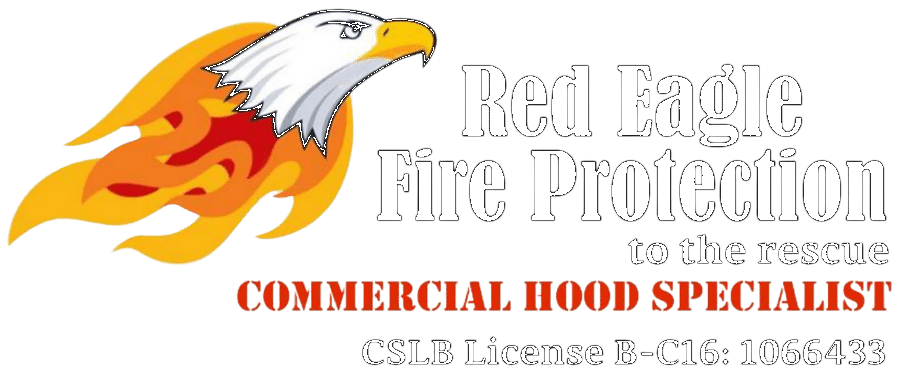In the realm of restaurant operations, the installation of a kitchen hood system is a critical component that often goes unnoticed, yet it plays a pivotal role in ensuring safety and efficiency within the establishment.
The selection of a restaurant hood installation service is a decision that requires careful consideration and an understanding of the specifics that separate the merely competent from the truly expert. When you consider the intricate network of ductwork, exhaust fans, fire suppression systems, and the regulatory codes that govern them all, it becomes abundantly clear that this is a task for seasoned professionals.
As we move forward, we will explore the intricacies involved in making a well-informed decision that ensures the seamless operation of your restaurant’s kitchen, while heightening the overall safety.
Understanding Restaurant Hood Importance
The significance of a restaurant hood system extends beyond mere legal compliance, playing a critical role in maintaining the safety, air quality, and overall operational efficiency of your dining establishment. A professionally installed hood system ensures a safe environment by extracting heat, smoke, and cooking emissions, thereby reducing the risk of fire hazards and potential health issues for staff and patrons.
Further, the hood system contributes to the air quality within the restaurant. It filters out contaminants and particulates from cooking processes, maintaining a clean and pleasant ambiance. This not only enhances customer dining experiences but also promotes a healthier working environment for employees.
Lastly, a well-functioning hood system is integral to the operational efficiency of your restaurant. It helps in maintaining the temperature stability within the kitchen, preventing overheating of appliances and extending their lifespan. Moreover, it aids in reducing energy consumption, which can lead to significant cost savings over time.
Key Features of a Professional Service
In evaluating professional restaurant hood installation services, several key features should be considered, including expertise, quality of materials used, adherence to safety standards, and provision of comprehensive after-sales services.
1. Expertise: The service provider’s team should possess technical expertise and hands-on experience in restaurant hood installation. Proficiency in this area ensures that the installation process is executed flawlessly, providing maximum effectiveness and durability.
2. Quality of Materials: The materials used for the installation should be of the highest quality. This not only ensures the longevity of the hood system but also its optimal performance.
3. Adherence to Safety Standards: Strict adherence to local and national safety standards is non-negotiable. This ensures the safety of both the employees working in the kitchen and the customers.
4. After-sales Services: A professional service doesn’t end with the installation. Reliable after-sales services, including maintenance, repairs, and customer support, should be part of the package.
These key features define a truly professional restaurant hood installation service. Choosing a service provider that excels in these areas ensures you get a robust, efficient, and safe hood system, contributing to a seamless and safe kitchen operation.
Assessing Installation Service Credentials
Before engaging a restaurant hood installation service, a thorough assessment of their credentials is of paramount importance to ensure the quality and safety of the service provided. This process should include, but not be limited to, inspection of their licenses, insurance coverages, certifications, and their track record of customer satisfaction.
Licenses are a basic requirement, as they demonstrate the service provider has met the necessary training and regulatory standards to operate in this field. A fully insured service provider is also a must-have, as it covers potential liabilities and unexpected damages during the installation process.
The possession of valid certifications from recognized authorities, such as the National Environmental Balancing Bureau (NEBB) or the American Society of Heating, Refrigerating and Air-Conditioning Engineers (ASHRAE), is another critical indicator of a professional service. These certifications affirm the service provider’s competence and adherence to industry standards and best practices.
Questions to Ask Potential Installers
Equipped with a comprehensive understanding of the installation service’s credentials, your next step involves posing incisive questions to potential installers, ensuring they possess the necessary expertise, experience, and commitment to safety. This dialogue will illuminate their proficiency, reliability, and adherence to industry standards.
When conversing with potential installers, consider the following inquiries as critical to your selection process:
1. Experience: How many years have they been in the kitchen hood installation business? Experience often correlates with skill level and knowledge of industry standards.
2. Certifications: Are they certified by the appropriate authority for restaurant hood installations? Certifications validate an installer’s competency and adherence to safety regulations.
3. Insurance: Do they have insurance that covers potential damage during installation? This protects you from incurring additional costs.
4. References: Can they provide references from previous clients? References offer insight into the installer’s work quality, professionalism, and customer satisfaction.
Avoiding Common Installation Mistakes
To ensure the longevity and efficiency of your restaurant hood system, it is crucial to avoid common installation mistakes that could potentially compromise the functionality and safety of your kitchen. One of the most frequently occurring errors is the improper positioning of the hood. It should be installed at an appropriate height above the cooking equipment for optimum smoke and heat extraction.
Another common error is neglecting to install a make-up air system. This system balances the air removed by the hood and prevents negative pressure in the kitchen, which could create backdrafts and compromise ventilation efficiency.
Often, restaurant owners fail to consider local fire and building codes during installation. Non-compliance not only puts your establishment at risk of penalties but also endangers the safety of your premises.
Lastly, incorrect sizing of the ductwork is a prevalent mistake. The duct size should match the hood’s exhaust rate for effective ventilation.
Engaging a professional restaurant hood installation service can help you avoid these pitfalls. Their expertise ensures proper installation, compliance with codes, and optimal system performance. Avoiding these common installation errors will extend your system’s lifespan and promote a safer, more efficient kitchen environment.

